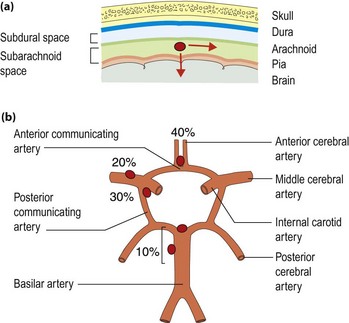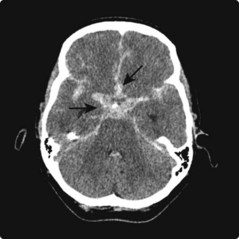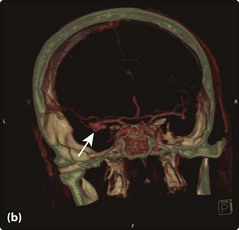Subarachnoid haemorrhage
Subarachnoid haemorrhage (SAH) is an important and potentially preventable cause of death and neurological disability. SAH is uncommon, with an incidence of 6–20 per 100 000 per year. It is rare below the age of 20 years and most frequent between 40 and 60 years of age.
Pathology
SAH usually results from rupture of an intracranial aneurysm into the subarachnoid space, the space between the pia mater covering the brain and the dura mater lining the skull (Fig. 1a). These aneurysms, usually found on the circle of Willis (Fig. 1b), are usually saccular but may be fusiform. About 5% of SAH is caused by bleeding from an arteriovenous malformation (AVM).
Differential diagnosis
If the patient is found unconscious, the differential diagnosis is that of coma (p. 50).
Investigations
Investigations are in two phases:
Complications
Treatment and prognosis
Patients should be transferred to a neurosurgical centre. They require frequent neurological observations, including pulse, blood pressure and Glasgow Coma Scale, to monitor for deterioration. Appropriate nursing care should be provided for confused and unconscious patients (p. 51).
Hydrocephalus should be treated with an appropriate drainage procedure.




















